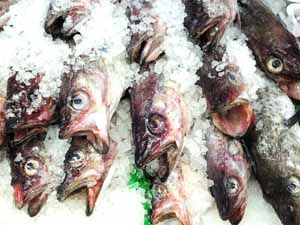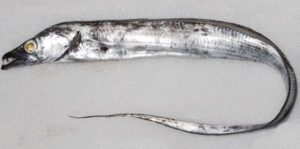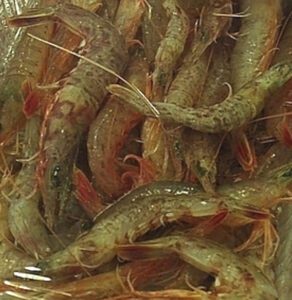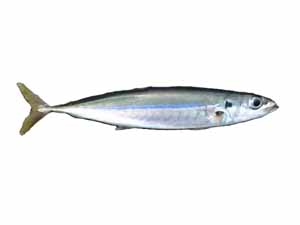The Common carp fish is a freshwater fish species. It is also called ‘European Carp‘ and actually a freshwater fish of europhic waters in lakes and larger rivers in Asia and Europe. It is available throughout the world, but the native wild populations are considered vulnerable by the IUCN. It is often considered as a destructive invasive species, being included in the list of 100 worst invasive species.
The Common carp fish are not available in the poles, but it has been introduced to every part of the world. These fish are the 3rd most frequently introduced fish species of the world. Their history as a farmed fish dates back to Roman times. Along with being used for foods, these fish are also now regarded as a pest in some regions due to their ability to out-compete native fish stocks.
The original Common carp fish was found in the inland delta of the Danube River about 2000 years ago. These are two subspecies of this fish, and both Asian and European subspecies have been domesticated. Domestication of carp fish as food was spread in Europe by monks between the 13th and 16th centuries. The wild forms of carp had already reached the delta of the Rhine in the 12th century (probably with some human help). And the variants that have arisen with domestication include the mirror carp (with large, mirror-like scales). However, read some more information about the Common carp fish below.
Characteristics
The Common carp fish can be of larger sized. The wild Common carp are generally slimmer than the domesticated forms (with body length about 4 times body height, red flesh and a forward-protruding mouth). Common carp is generally a heavy-bodied fish with barbels on either side of the upper jaw. Generally their body color varies from brassy green or yellow, to golden brown or even silvery. Their belly is generally yellowish-white. The dorsal fin of these fish has 17-21 rays. Both dorsal and anal fin have a heavy toothed spine.

Common carp can grow to very large size if given adequate space and foods. They can reach as much as 1.2 meter body length, and around 45 kg body weight.[1]
Feeding
The Common carp fish are omnivorous. Generally, they can eat a herbivorous diet of water plants, but prefer to scavenge the bottom for insects, crustaceans (including zooplankton), crawfish and benthic worms.
Breeding
Spawning of the Common carp fish generally begins in late April and continues to June. The large females are excellent egg-layers, and they can generally lay between 0.3 to 0.5 million eggs in a single spawn. And they can spawn multiple times in a season. They generally spawn in response to rising water temperatures and rainfall.
Spawning is often stimulated using a process called hypophysation in commercial operations (where lyophilized pituitary extract is injected into the fish).
Uses of Common Carp Fish
The Common carp fish is generally used for food in Asia and Europe. But they are also used for sport fishing.
Special Notes
The Common carp is one of the most common carp fish species throughout the world. They have been introduced to many countries throughout the world. Along with their wide popularity, the are also been regarded as a pest in some regions. They are regarded as pets mainly because of the ability to out-compete native fish stocks.
The Common carp fish can generally tolerate most of the environmental conditions. They generally prefer large bodies of slow or standing water and soft, vegetative sediments.
As a schooling fish, they generally prefer to be in groups of 5 or more fish. They generally prefer to live naturally in temperate climates in fresh or slightly brakish water with pH level between 6.5 and 9.0, and salinity up to about 0.5 percent. They do very well within the temperatures of 3°-35° C. But the ideal temperature is between 23 °C and 30°C.
The Common carp fish are even able to survive easily in a frozen-over pond (as long as some free water remains below the ice). They can also tolerate very low oxygen levels. They survive in such water bodies by gulping air at the surface.
The female Common carp fish can lay many eggs per year, but their population remains the same. The eggs and fry often fall victim to bacteria, fungi and the vast array of tiny predators in the stagnant water environment.
Along with being used mainly for food, these fish are also raised as a sport fish. However, review full breed profile of the Common carp fish in the chart below.
| Name | Common Carp |
| Kingdom | Animalia |
| Phylum | Chordata |
| Class | Actinopterygii |
| Order | Cypriniformes |
| Family | Cyprinidae |
| Genus | Cyprinus |
| Species | C. carpio |
| Binomial Name | Cyprinus caprio |
| Other Names | European Carp |
| Breed Purpose | Mainly food, also sport fishing |
| Special Notes | Highly available throughout the world, regarded as pest in some regions, they can tolerate most of the environmental conditions, they generally prefer large bodies of slow or standing water source, love to live in groups, able to survive in a frozen-over pond, can tolerate very low oxygen levels, adult females can lay 0.3 to 0.5 million eggs per spawning, today used mainly for food, also raised as a sport fish |
| Breeding Method | Natural and artificial |
| Weight | Usually grow 2-3 kg in commercial farms, but can grow up to 45 kg |
| Water Type | Freshwater |
| Climate Tolerance | Almost all climates |
| Body Color | Body color varies from bassy green or yellow, to green brown or even silvery |
| Rarity | Common |
| Availability | Worldwide |






